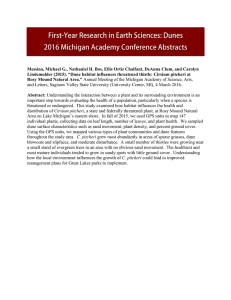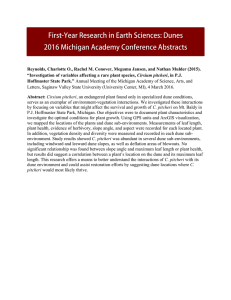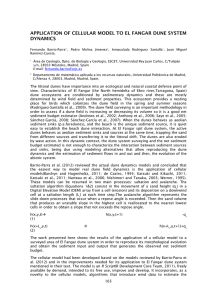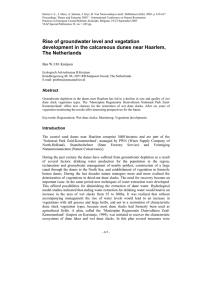Abstract. Plains aboriginal occupation and dune activity in the Elbow Sand... Saskatchewan, Canada. Vegetation encroachment has rapidly outpaced migration of an...
advertisement
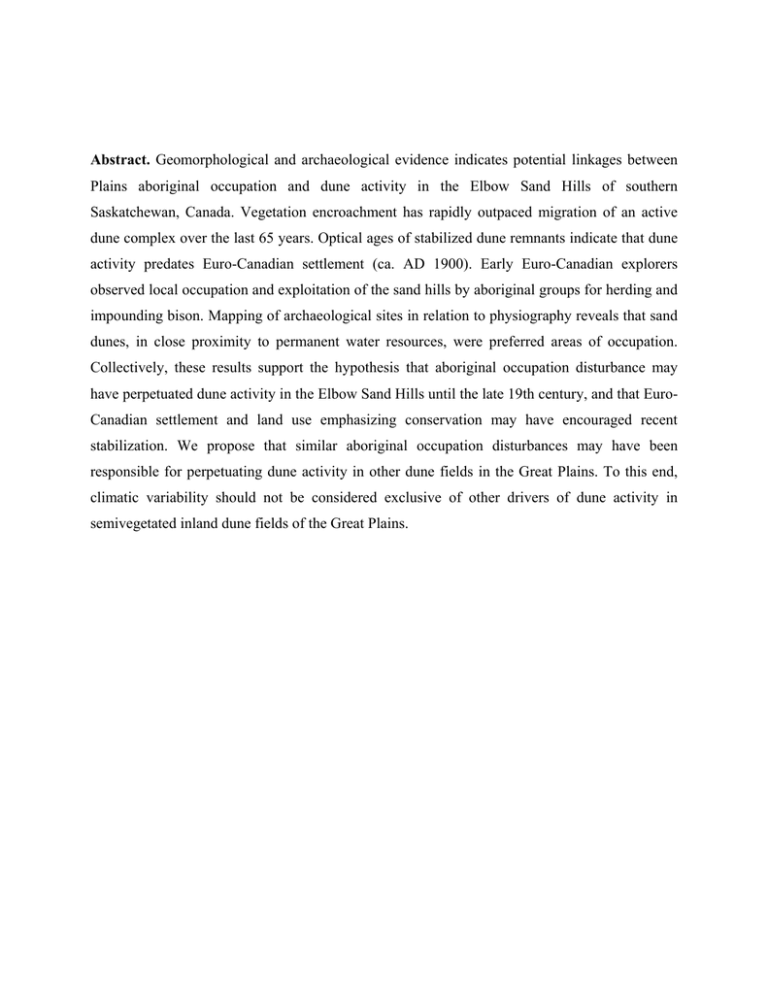
Abstract. Geomorphological and archaeological evidence indicates potential linkages between Plains aboriginal occupation and dune activity in the Elbow Sand Hills of southern Saskatchewan, Canada. Vegetation encroachment has rapidly outpaced migration of an active dune complex over the last 65 years. Optical ages of stabilized dune remnants indicate that dune activity predates Euro-Canadian settlement (ca. AD 1900). Early Euro-Canadian explorers observed local occupation and exploitation of the sand hills by aboriginal groups for herding and impounding bison. Mapping of archaeological sites in relation to physiography reveals that sand dunes, in close proximity to permanent water resources, were preferred areas of occupation. Collectively, these results support the hypothesis that aboriginal occupation disturbance may have perpetuated dune activity in the Elbow Sand Hills until the late 19th century, and that EuroCanadian settlement and land use emphasizing conservation may have encouraged recent stabilization. We propose that similar aboriginal occupation disturbances may have been responsible for perpetuating dune activity in other dune fields in the Great Plains. To this end, climatic variability should not be considered exclusive of other drivers of dune activity in semivegetated inland dune fields of the Great Plains.

